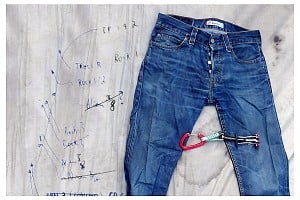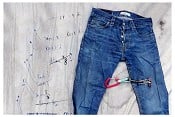In reply to quadmyre:
"Distortion or rupture of the collateral ligaments of the finger joints occurs when a climber slips or falls while a finger is fixed on a tight 1-finger hold (Figure 3 ) and high shear forces affect the finger. Clinical examination after such accidents discloses instability of the finger joint. Radiographs may show a bony extraction. Strained or torn collateral ligaments rarely heal well enough to provide the stability that existed before the injury. This instability can cause joint effusions and cartilage damage. Therapy depends on the severity of the injury. The PIP joint should be splinted at 30° of flexion for an initial period of 1 to 4 weeks. An additional rest period of 1 to 4 weeks should follow. Climbing activity can be resumed after 3 to 6 weeks, but only open-hand grips should be used, and the finger should be taped to stabilize the joint. Chronic joint instability may force the climber to continue taping this finger. Surgical intervention may be necessary to correct severe instability.5,25,37,47"
http://www.wemjournal.org/wmsonline/?request=get-document&issn=1080-603...









